Charts of the Week
Current economic trends from 8 to 12 June 2020: exports and imports of goods, production volume in manufacturing, traffic of electronically tolled vehicles and other charts
As a result of measures to contain COVID-19 in Slovenia and most EU countries, the decline in goods trade deepened significantly in April. A fall in foreign demand, interrupted supply chains and the shutdown of production in some Slovenian companies also led to a further decline in the volume of manufacturing production. Data on freight transport and electricity consumption indicate that at the beginning of June economic activity remained at significantly lower levels compared with last year, but since mid-April the year-on-year decline has decreased. In the first two weeks of June, the number of unemployed persons fell somewhat after increasing by a quarter during the epidemic.
Exports and imports of goods, April 2020
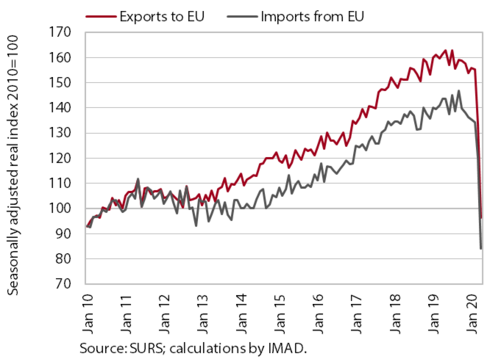
Goods trade, particularly with EU countries, decreased markedly in April. As a result of measures to stem the epidemic and the complete shutdown of non-essential activities in some EU Member States, exports to EU dropped noticeably (the most to Italy and Germany), being more than 40% lower year on year. Lower exports were recorded for all main product groups, particularly road vehicles and vehicle parts and accessories (by around three quarters year on year) and electrical machinery and equipment. With significantly worse expectations about orders, containment measures in Slovenia and a decline in household consumption, imports also declined sharply in April.
Production volume in manufacturing, April 2020
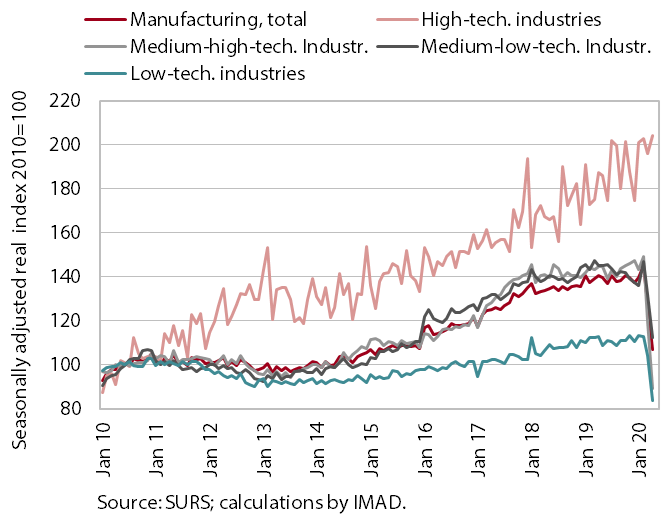
The decline in manufacturing production deepened in April due to containment measures. In April, manufacturing production was on average 27% lower year on year, in our assessment mainly due to activities integrated into the car industry (in addition to the manufacture of motor vehicles, also some segments of the rubber and metal industries and electrical equipment manufacturing). Motor vehicle production declined the most, by around 75%, and was a quarter lower year on year in the first four months. The containment measures, as expected, had the smallest impact on high-technology industries (the pharmaceutical industry in particular, which accounts for the largest part), where production was similar to that one year earlier.
Traffic of electronically tolled vehicles on Slovenian motorways, June 2020
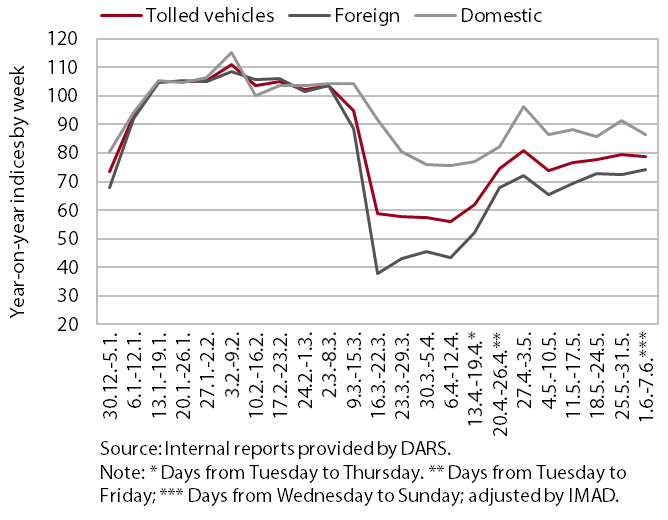
After a significant increase since mid-April, freight traffic on Slovenian motorways has remained approximately one fifth below last year’s level in the last few weeks. After a decline of more than 40% in the first weeks after the declaration of the epidemic, freight traffic was still a fifth lower year on year in the first week of June. The distance travelled by domestic and foreign trucks was more than a tenth and more than a quarter lower respectively, although as a result of EU measures for the free flow of goods and the general relaxation of measures in some countries, foreign truck traffic had increased significantly from its lows at the end of March.
Electricity consumption, June 2020
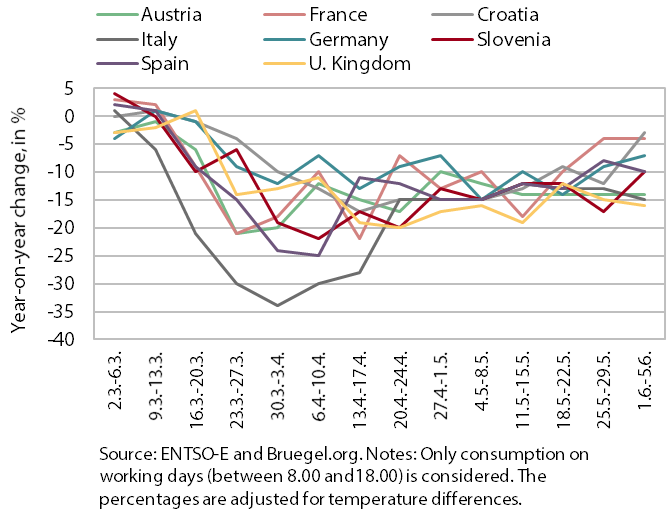
The year-on-year decline in weekly electricity consumption is gradually decreasing. Electricity consumption, one of the indicators of economic activity, was 10% lower year on year in Slovenia in the first week of June, which means a further improvement relative to the weeks in May, when the decline averaged 14%. In Slovenia’s main trading partners, the year-on-year fall in consumption in the first week of June decreased the most in Croatia, from 12% at the end of May to 3%. Germany also stands out, where after increasing in May the year-on-year decline in consumption decreased for the second consecutive week (to 7%).
Registered unemployment, April – June 2020
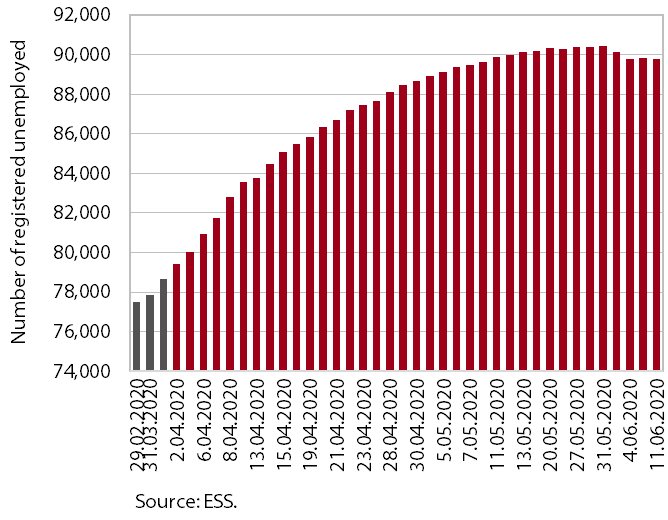
The number of unemployed persons declined somewhat in the first two weeks of June after increasing by a quarter during the epidemic. By the end of May, the number of unemployed persons had risen to 90,415, which is 25.6% more than one year earlier. On 11 June, it amounted to 89,760 according to ESS unofficial (daily) data, which is 0.7% less than at the end of May. Among the newly registered, there were significantly more persons who lost work because their fixed-term employment contracts were not extended (a reason more frequently cited among younger age groups) or for business reasons than before the outbreak of the epidemic. The activities with the largest inflows are accommodation and food service activities, trade and manufacturing. With a smaller inflow into unemployment and a larger outflow into employment, the number of unemployed persons ceased rising in the second half of May, while in the first half of June the number is already falling. This is related to the easing of containment measures and the adoption of the third legislative package of measures to mitigate the economic impact of the crisis.
